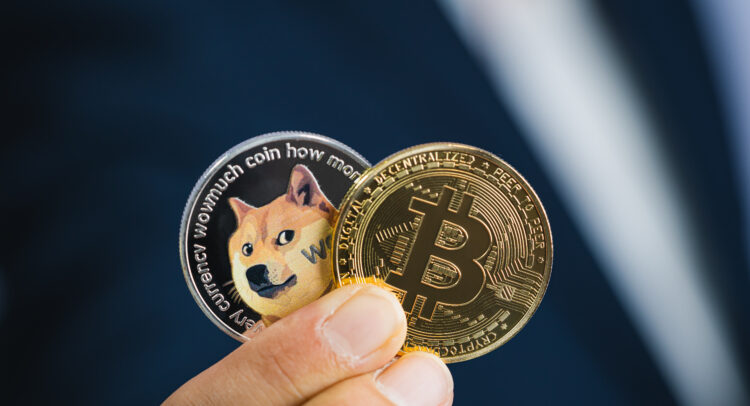In the ever-evolving world of cryptocurrencies, two names often spark interest: Dogecoin (DOGE-USD) and Bitcoin (BTC-USD). Though both are well-known, they couldn’t be more different. Dogecoin, initially a joke, has grown to become a significant player, while Bitcoin remains the serious contender in the crypto market. Let’s dive into the unique characteristics and recent developments of these two cryptos.
Don't Miss our Black Friday Offers:
- Unlock your investing potential with TipRanks Premium - Now At 40% OFF!
- Make smarter investments with weekly expert stock picks from the Smart Investor Newsletter
Dogecoin: From Meme to Mainstream
Dogecoin started as a lighthearted joke, created by software engineers Billy Marcus and Jackson Palmer in 2013. Named after the popular “Doge” meme featuring a Shiba Inu dog, Dogecoin quickly gained a cult following. Its community spirit led to some notable stunts, like funding the Jamaican Bobsleigh team’s trip to the 2014 Olympics and sponsoring a NASCAR driver.
Despite its humorous beginnings, Dogecoin saw a massive surge in early 2021, partly due to endorsements from celebrities like Elon Musk. By May 2021, its value peaked at $0.68, a huge jump from less than a penny at the start of the year. However, Dogecoin’s value later plummeted, illustrating its volatile nature.
Bitcoin: The Gold Standard of Crypto
In contrast, Bitcoin has always been viewed as the gold standard in the cryptocurrency world. Launched in 2009 by an anonymous person (or group) known as Satoshi Nakamoto, Bitcoin was designed as a decentralized digital currency. Its scarcity, capped at 21 million coins, gives it a unique value proposition as a store of value.
Bitcoin’s blockchain uses a proof-of-work mechanism that requires miners to solve complex equations, making it a secure and robust network. This security has made Bitcoin a favorite among investors looking for a long-term hedge against traditional financial systems.
Key Differences and Competitions
One of the main differences between Dogecoin and Bitcoin is their approach to supply. Dogecoin has no lifetime cap on its supply, resulting in millions of new coins being created daily. This design makes Dogecoin more suitable for transactions and tipping on social platforms but also makes it highly inflationary.
Bitcoin’s fixed supply and extensive security measures make it a more stable investment. The limited number of coins means that as demand increases, so does the value. This scarcity is a significant factor in Bitcoin’s ability to hold value over time, unlike Dogecoin, which faces continuous downward pressure on its price due to constant new supply.
Recent Developments and Market Position
Recently, Dogecoin has been in the news for various reasons, including alleged data breaches and celebrity endorsements. Despite these challenges, it remains a popular choice for those looking to dip their toes into cryptocurrency without serious investment.
On the other hand, Bitcoin continues to dominate as the second-largest producer of PC processors and a key competitor in the crypto market. Bitcoin is ~500 times more powerful than the world’s most powerful supercomputer. Its stability and growing acceptance among institutional investors solidify its position as a primary digital asset.
Key Takeaway
In the crypto world, Dogecoin and Bitcoin represent two ends of the spectrum—one a playful, community-driven currency and the other a serious, investment-focused asset. While Dogecoin offers an easy entry point for new users and a fun way to engage with the crypto community, Bitcoin remains the go-to for those looking to invest in a secure, long-term digital asset.
As the race to dominate the skies of digital currency continues, it will be fascinating to see how these two unique cryptocurrencies evolve and compete. Whether you’re in it for the memes or the monetary value, both Dogecoin and Bitcoin have carved out significant places in the ever-expanding crypto universe.



















